Psychotria viridis Documentation – A quick overview of this magic plant
Psychotria viridis Documentation
A quick overview of this magic plant
Psychotria viridis is a perennial shrub of the Rubiaceae family. In the Quechua languages it is called chacruna or chacrona. In Quechua, chaqruy is a verb meaning “to mix”.
P. viridis is a close relative of Psychotria carthagenensis (a.k.a. samiruka or amiruca) of Ecuador. The leaves differ by P. viridis having leaf edges that extend all the way to the base of the leaf stem.[2]
In Ecuador, the name chacruna refers to Diplopterys cabrerana
P. viridis grows to a height of approximately 5 m (16 ft). Its branches span a diameter of about 2 m (6 ft 7 in)[3][unreliable source?]
Stems[edit]
In the middle and lower parts of the stem, situated between the insertion points of the two opposite leaves there is a horizontal scar 0.3–1 mm (0.012–0.039 in) wide that extends between the leaves (or leaf scars) and sometimes also connects over the tops of these scars, and along the top side of this scar there is a dense, usually furry line of fine trichomes (i.e., plant hairs) usually 0.5–1 mm (0.020–0.039 in) long that are reddish brown when dried. This combination of features is diagnostic for many species in the genus Psychotria, though not for any individual species. These features distinguish Psychotria L. Subg. Psychotria; other subgenera of Psychotria lack the well developed reddish brown trichomes inserted above the stipule scars. On the upper stems of P. viridis these features are obscured by a stipule (see below), which covers the trichomes; the scar actually marks the point where this structure has fallen off.
These are leafy structures that cover and protect the young developing leaves, then fall off, leaving scars on the stem. The stipules are produced in pairs, and their form is distinctive for P. viridis. They are 5–25 mm (0.20–0.98 in) by 4–12 mm (0.16–0.47 in), elliptic in outline, sharply angled at the apex, papery to membranaceous in texture, ciliate (i.e., fringed) along the upper margins, and longitudinally flanged or winged along the middle. However, stipule shape and size is quite variable among different plants, and also depends on the stipule’s developmental stage and other factors such as whether the stem that produced it is reproductive or vegetative.
Leaves[edit]
Leaves are opposite in arrangement (i.e., produced in pairs along the stems), generally 5–15 cm (2.0–5.9 in) by 2–6 cm (0.79–2.36 in), in outline generally elliptic or often widest above the middle, usually sharply angled at base and apex, papery in texture, overall smooth or infrequently with microscopic plant hairs on the lower surface, have 5–10 pairs of secondary veins, and on the lower surface usually have foveolae (see next item). The leaves are borne on petioles (i.e., leaf stalks) generally 1–10 mm (0.039–0.394 in) long. When dry, the leaves of Psychotria viridis usually are gray or reddish brown and are similar to those of a few other New World species of Psychotria.
These are small pockets found on the lower leaf surface near the junction of the secondary (i.e., side) veins with the central vein. They function as shelter for tiny invertebrates such as mites that live on the plant leaf. These mites apparently often are symbiotic with the plant, taking shelter in these structures and eating fungi and herbivorous invertebrates that can damage the leaf. The foveolae (also called domatia) are distinctive for Psychotria viridis and a few related species: They are generally 1.5–5 mm (0.059–0.197 in) long and 0.5–1 mm (0.020–0.039 in) wide at the top, conical and tapered to a closed base, open and truncate or variously ornamented at the top, and situated along the sides of the central vein with the opening usually near a secondary vein . These foveolae vary in shape among different plants, and in number on individual leaves, and may not even be present on some leaves. Most often each leaf bears at least one pair of foveolae, which may be close to the apex; the foveolae are often more numerous on leaves from vegetative stems than on those from reproductive stems.[4][unreliable source?]
Cultivation[edit]
Psychotria viridis is hardy in USDA zone 10 or higher.[5][unreliable source?]
Cultivation from cuttings is easiest.[6] A single leaf (or even part of a leaf slightly covered with soil) can be sufficient for a cutting.[6] Propagation from seed is extremely difficult. The germination rate can be as low as 1%.[6] There are approximately 50 seeds/g.[5][unreliable source?]
Indoor hydroponic cultivation of Psychotria viridis requires a light cycle. The plant will not utilize its root system as often in daylight hours. Optimal water garden pH is 5.5 to 6.10′. Parts per million (PPM) levels of nutrient solution should be around 300 to 500 PPM. Nutrient solution burning can occur at levels as low as 800 PPM.
Alkaloids[edit]
Dried P. viridis contains approximately 0.3% dimethyltryptamine (DMT).[4] Other alkaloids such as beta-carbolines and N-methyltryptamine (NMT) have been found. The alkaloid content is said to be highest in the morning.[6]
Traditional medicine[edit]
The Machiguenga people of Peru use juice from the leaves as eye drops to treat migraine headaches.[6]
Hallucinogenic[edit]
P. viridis contains the hallucinogenic—or entheogenic—indole alkaloid dimethyltryptamine (DMT) in levels varying from 0.1% to 0.61% dried mass.[7][unreliable source?] It is known primarily as an additive to the ayahuasca brew used in South and Central America. The mechanism of action is via the monoamine oxidase inhibitor (MAOI) present in Banisteriopsis caapi, which allows ayahuasca to be effective in oral doses (unlike smoking DMT crystals which requires no conditioning partner substance). This use is legal in Brazil among native tribes and followers of some syncretic religions.[citation needed]
Vegetalistas, healers in the Amazon regions of Peru, Ecuador, and Colombia, recognize different sub-varieties of Psychotria viridis, based on the location of glands on the back of the leaves.[citation needed]
Rooted P. Viridis Cuttings For sale
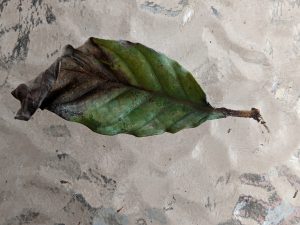
Rooted P. Viridis Cuttings For sale
Rooted P. Viridis Cuttings For sale
Banisteriopsis caapi is a South American hallucinogenic vine in the Malpighiaceae plant family, and is well recognised as a main ingredient of the famous sacred drink called ‘ayahuasca’ along with the plant Psychotria viridis[92,93]. The brew has been traditionally used by ethnic groups for ritual, medicinal and recreational purposes [94,95]. Over the last decade, the use of ayahuasca has spread outside of South America to some religious groups in the USA and European countries as a NPS material [96]. The beverage is usually prepared by boiling or soaking two or more potent psychotropic plants that are native to the Amazon. The most commonly used plants are the stems of the vine B. caapi together with an adjuvant plant for instance the leaves of certain Rubiaceae species such as P. viridis, or Diplopterys cabrerana (Malpighiaceae; syn. Banisteriopsis rusbyana) as well as plants in the Solanaceae family such as Nicotiana sp., Datura sp. and even Capsicum sp [92,97,98]. The major components reported in B. caapi are β-carboline alkaloid derivatives (0.05–1.95% of dry weight), which mainly include harmine, harmaline and tetrahydroharmine (Fig. 14.11) [92].
Tryptamines
Tryptamines are natural compounds or designer drugs that originate from the decarboxylation of tryptophan (Araujo, Carvalho, Bastos Mde, Guedes de Pinho, & Carvalho, 2015; Tittarelli, Mannocchi, Pantan, & Romolo, 2015). Plants like Banisteriopsis caapi and Psychotria viridis are the source of tetrahydroharmine (THH) and N,N-dimethyltryptamine (DMT), respectively, which are often ingested together to increase their effects; fungi like Psilocybe cubensis mushrooms contain psilocybin (4-phosphoryloxy-N,N-dimethyltryptamine) and psilocin (4-hydroxy-N,N-dimethyltryptamine); animals like Bufo alvariusprovide bufotenine, 5-hydroxy-N,N-dimethyltryptamine (5-OH-DMT), and 5-methoxy-N,N-dimethyltryptamine (5-MeO-DMT) (Araujo et al., 2015; Tittarelli et al., 2015). Synthetic tryptamines are derived from modifications of natural tryptamines. LSD, for example, is obtained by the modification of lysergic acid amine (LSA), an analog present in the seeds of Argyreia nervosa and Ipomoea violacea (Araujo et al., 2015). Recently, abused novel tryptamines are alpha-methyltryptamine (AMT), 5-methoxy-α-methyltryptamine (5-MeO-AMT), 5-methoxy-N,N-diisopropyltryptamine (5-MeO-DIPT), known with the streets name of “foxy” or “foxy methoxy,” 5-methoxy-N,N-diallyltryptamine (5-MeODALT), and N,N-diallyltryptamine (DALT) (Araujo et al., 2015; Schifano et al., 2015).Rooted P. Viridis Cuttings For sale
Origin and Classification
Bufotenine was first isolated 1934 by Handovsky, and then synthesized in 1935 by Hoshino (Araujo et al., 2015; Hoshino & Shimodaira, 1935). LSD was synthesized in 1938 by Hofmann, while AMT was commercialized in 1960 as an antidepressant drug with the brand name of Indopan (Araujo et al., 2015). Tryptamines can be divided essentially into (1) simple tryptamines, (2) tryptamines presenting modification on the indole ring in position 4, and (3) tryptamines with modification in position 5. Other conformations reduce the hallucinogenic properties of tryptamines (Tittarelli et al., 2015).Rooted P. Viridis Cuttings For sale
Chemical Structures and Pharmacology
All tryptamines share the basic structure of the amino acid tryptophan, that is, two indole rings with an aminoethyl group at position 3. Tryptamines are derived by its decarboxylation, followed by one of the following steps: (1) an addition of α-alkyl substituent (AMT); (2) a modification on nitrogen atom of the side chain (DALT and DIPT); (3) a modification in position 4 (4-OH-DALT); or (4) in position 5 (5-MeO-DIPT) (Araujo et al., 2015). The indole nucleus is responsible for the hallucinogenic properties, while the hydroxyl and methoxy groups in positions 4 and 5 enhance drug potency (Araujo et al., 2015).
Contrary to other hallucinogenic compounds, many tryptamines display higher affinity than serotonin for other monoamines. Affinity for the serotonin 5-HT2A subtype receptor shown by tryptamines is very low as compared to phenethylamines, with the exception of LSD that displays the highest affinity for the 5-HT2Areceptors (Fantegrossi, Murnane, & Reissig, 2008). AMT plays a role in the release and reuptake of dopamine (Tittarelli et al., 2015), while DMT is an agonist of the serotonin 5-HT2A and 5-HT2C, receptors and shows affinity also for α1 and α2-adrenergic receptors, dopamine D1, and sigma-1 receptors (Tittarelli et al., 2015). DPT acts as a strong serotonin receptors reuptake inhibitor and partial agonist to the 5HT1A receptors, while DiPT shows affinity to 5HT2A and acts as partial agonist to 5HT1A receptors (Tittarelli et al., 2015). 5-MeO-AMT is an agonist of 5-HT2A and 5-HT1A receptors and inhibits monoamine reuptake (Tittarelli et al., 2015). 5-MeO-DMT has high affinity for the serotonin 5-HT1A receptor, while 5-MeO-DiPT inhibits serotonin reuptake (Tittarelli et al., 2015).Rooted P. Viridis Cuttings For sale
Route of Administration, Users, and Reasons to Use
Tryptamines are sold as tablets or powder and consumed through different routes of administration (Araujo et al., 2015; Corkery, Durkin, Elliott, Schifano, & Ghodse, 2012). In particular, the Psilocybe mushrooms are eaten raw or infused in tea to extract the active principles, while other tryptamines are insufflated (snorting or sniffing), inhaled, injected intravenously, ingested in capsules or wrapped in a cigarette paper, or administered rectally (Araujo et al., 2015; Corkery et al., 2012). Generally, tryptamine users are young males; 5-MeO-DIPT is frequently abused by homosexuals (Araujo et al., 2015). Main reasons to use tryptamines include the curiosity to try a different hallucinogen, its easy accessibility due to legal status, the low cost, and the fact that they are not detectable with routine screening drug tests (Araujo et al., 2015; Winstock, Kaar, & Borschmann, 2014).
Toxic Effects
More common effects after use of tryptamines are hallucinogenic effects accompanied by euphoria,increased body energy, difficulty in walking due to loss of limbs control, and “out of body” experiences (Corkery et al., 2012; Nelson et al., 2014). At high doses vasoconstriction, enhanced blood pressure, rapid heartbeat, headache, sweating, bruxism, dilated pupils, and paranoia (i.e., bad trip) may occur along with anxiety, nausea, strong desire to eat, increased alertness, and agitation (Araujo et al., 2015; Corkery et al., 2012). Fatal intoxications have been reported after use of AMT, 5-MeO-AMT, and 5-MeO-DIPT due to cardiac failure or as a consequence of the hallucinatory effects (Corkery et al., 2012).Rooted P. Viridis Cuttings For sale
Legislation Status
Psilocybin, psilocin, and psilocybin mushrooms are Schedule I substances in the United States. LSD was scheduled in 1970, while AMT and 5-MeO-DIPT are Schedule I substances since 2005. 5-MeO-DALT is regulated in few countries (e.g., Bulgaria, Finland, and Romania), and in Japan it is classified as “designated substance” by the Pharmaceutical Affairs Law, which makes this drug illegal to possess or sell (Araujo et al., 2015; Corkery et al., 2012Rooted P. Viridis Cuttings For sale
p. viridis leaf for sale
p. viridis leaf for sale
p. viridis leaf for sale -Our P viridis otherwise known as Psychotria Viridis is grown organiclly in the United States with love and care. Grown organically in the United States from 7 year old trees. Each order is picked on the day that we ship out to ensure the freshest leaf arriving to your door. Grown organically in the United States from 8 year old trees.
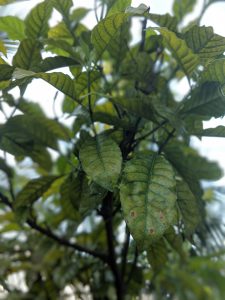
How long should I expect Shipping to take?
p. viridis leaf for sale – P Viridis Leaf cutting can be taken the same day they ship. All P Virids Leaf will only ship out Monday – Wednesday. Customers can select either 2 -day Priority USPS Mail or Expidited Shipping. Our friendly staff members will ship out your normally by 2 pm. Each order will receive a notification and tracking number once the order goes out.
The Kratom Bible is also available here on the #kratomAPP
What happens if there is a issue with my P. Viridis Leaf?
p. viridis leaf for sale – We guarantee to get to your cuttings to your door healthy and green. But, sometimes things can happen. If there is ever a issue with your order please contact our team immediately. We ask that you email us at kozykratom@gmail.com it is helpful if you also include a photo of the situation. Our helpful staff will try to respond within the hour.
The Kratom Bible is also available here on the #kratomAPP
The Kratom Project
Our goal is to merge tech with kratom to document every single aspect of these amazing plant while we grow these magnificent We have taken kratom documentation to a new level and introduce “The Kratom Project”. On the #kratomAPP Kratom Watch Dog we tracking our kratom nursery as well as uploading every single interaction our staff has with our fully mature organic American kratom tree nursery. We track is how much and how often we water or fertilize. Furthermore, the growth with photos or video that were taken for the day that are also then accessible from that day on the Kratom Watch Dog in the Photos Section. Contact our team about “The Kratom Project” and help make history. We appreciate the continued support from the kratom community.
Utilizing a technology called NFC. Near Field Communication, tags are small integrated circuits designed to store information that can be retrieved by NFC-enabled devices like the smartphones and tablets. These small stickers of wireless technology can also allow data transfer between two NFC enabled devices.


The Kratom Bible is also available here on the #kratomAPP
The #KratomAPP
p. viridis leaf for sale – Join us on our #kratomAPP on KratomWatchDog We are a Kratom social network built from the ground up by one of the founding member of the non-profit American Kratom Association. We are a booming social community with a focus on kratom advocacy. You can also find us on our group on Facebook by looking up Kratom The Tree or email us at kozykratom@gmail.com We are more than happy to talk with you anytime, and share our experience.

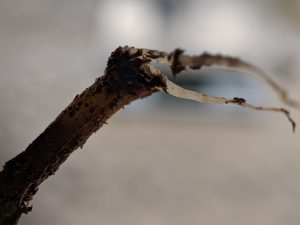
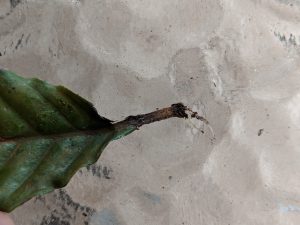

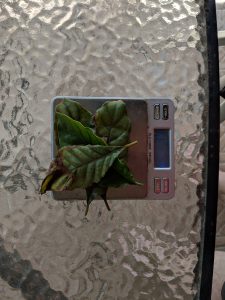
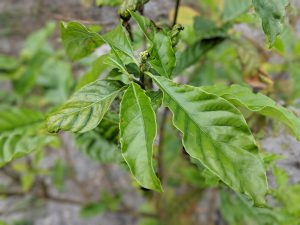
Recent Comments